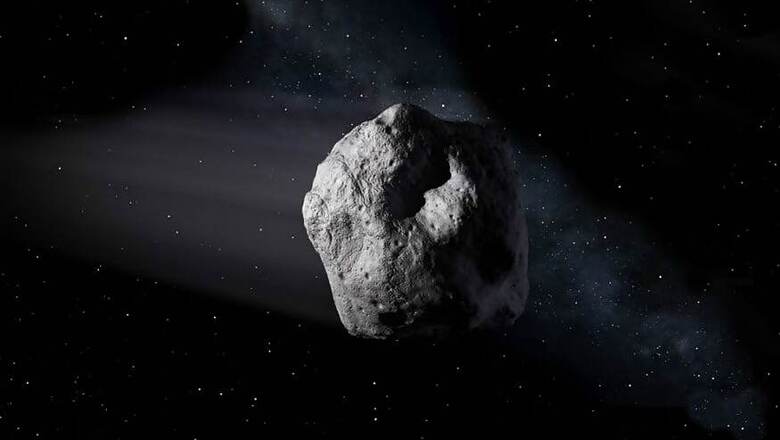
views
Last weekend, the Centre for Near Earth Object Studies (CNEOS), operated by NASA to detect potentially hazardous space bodies that may collide with our planet, revealed the fly-bys of not one but four asteroids from within the identified potentially hazardous belt around Earth. Now, multiple reports have stated that yet another asteroid, the gigantic 1998 OR2, is making an approach towards Earth next month. Given NASA's labelling of its trajectory as potentially hazardous, does the world seem like it would have yet another thing to worry about, beyond the ongoing coronavirus pandemic?
Well, not quite.
Before we get all panicky, it is important to understand the term 'potentially hazardous' in space parlance. According to NASA's official classification of asteroids and other space rock orbits, anything that intersects the Earth's orbit at a distance of less than 7.5 million kilometres will qualify as being potentially hazardous. As a result, observers of this space will need to note that there are thousands of asteroids and space debris that lie within this perceived belt, and pose very little to absolutely no threat to our planet.
On this note, it is important to note that asteroid 1998 OR2 will fly past Earth at a distance of 6.3 million kilometres from our planet, which, be rest assured, is more than just safe distance from us. For reference, the distance between the Earth and the moon is 3,85,000 (385,000) kilometres, which places the 1998 OR2 at a distance of 16.4x as that between Earth and its closest celestial body.
Had this not been so, however, it appears that we may have had a problem in our hands. The asteroid 1998 OR2, which will fly by us at 3:26PM IST on April 29, is rather hefty, and has a diameter of 4.1 kilometres (~13,450 feet). In comparison, the asteroid 2020 DP4, which was the largest of the four asteroids that flew past Earth in the wee hours of Monday, March 23, measured only 180 feet in diameter — making the soon-to-approach 1998 OR2 nearly 74x the size. With a space rock as big, it surely would have been cause for concern had the asteroid fly-by happened in closer proximity.
As we discussed before, asteroid fly-bys are neither uncommon and nor particularly threatening. It is a fairly regular occurrence, which scientists and space researchers have observed for a long time. However, given advances in technology, NASA has designed CNEOS to give us an edge in detecting space objects that can potentially collide into Earth. While small space rocks are of no threat and easily disintegrate in the Earth's atmosphere, researchers are looking for ways to devise techniques to deflect potential asteroids away from collision course, should need arise.



















Comments
0 comment